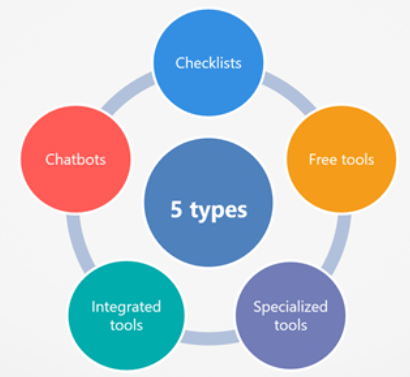Onboarding Tools
What are Onboarding Tools
Definition:
Onboarding tools are software applications, platforms, or resources designed to streamline and enhance the process of welcoming, integrating, and training new members within an organization or system. These tools automate various aspects of the onboarding process, providing structure, efficiency, and support to both new members and the organization.
Analogies:
Think of onboarding tools as the GPS navigation system for new employees in an organization. Just as GPS helps drivers navigate unfamiliar roads efficiently, onboarding tools guide new members through the intricacies of their roles, responsibilities, and organizational culture, ensuring a smooth and productive transition.
Further Description:
Onboarding tools encompass a wide range of software solutions and resources tailored to different aspects of the onboarding process. They may include learning management systems (LMS), employee onboarding software, digital training modules, collaboration platforms, knowledge bases, and interactive guides.
Key Features of Onboarding Tools:
- Customizable Workflows: Onboarding tools allow organizations to create customizable onboarding workflows tailored to different roles, departments, and levels within the organization.
- Training and Learning Modules: These tools offer interactive training modules, tutorials, and resources to equip new members with the knowledge and skills required to excel in their roles.
- Task Management: Onboarding tools facilitate task assignment, tracking, and management, ensuring that new members stay on track with their onboarding activities and milestones.
- Document Management: They provide centralized repositories for documents, policies, and compliance materials, enabling new members to access critical information easily.
- Communication and Collaboration: Onboarding tools include features for communication, collaboration, and networking, fostering connections among new members and existing teams.
Benefits of Onboarding Tools:
- Efficiency and Consistency: Onboarding tools automate repetitive tasks, standardize processes, and ensure consistency across different departments and teams, saving time and reducing administrative overhead.
- Improved Engagement: Interactive and engaging onboarding experiences provided by these tools enhance new members’ engagement, satisfaction, and sense of belonging within the organization.
- Compliance and Risk Management: Onboarding tools help organizations ensure compliance with regulatory requirements, mitigate risks, and maintain documentation of onboarding activities.
- Data Analytics and Insights: These tools offer analytics and reporting capabilities, allowing organizations to track onboarding metrics, identify trends, and make data-driven improvements to the onboarding process.
Challenges in Implementing Onboarding Tools:
- Integration with Existing Systems: Integrating onboarding tools with existing HR systems, learning management systems, and collaboration platforms may pose technical challenges and require careful planning.
- User Adoption: Ensuring user adoption and engagement with onboarding tools among both new members and existing employees requires effective communication, training, and support.
- Cost and Resource Allocation: Investing in onboarding tools involves upfront costs, ongoing maintenance, and resource allocation, which organizations need to evaluate against the expected benefits and ROI.
Key Takeaways:
- Onboarding tools play a crucial role in streamlining and enhancing the new member experience, providing structure, efficiency, and support throughout the onboarding process.
- Key features of onboarding tools include customizable workflows, training modules, task management, document management, and communication and collaboration capabilities.
- Benefits of implementing onboarding tools include improved efficiency, engagement, compliance, and data-driven insights, although organizations must address challenges related to integration, user adoption, and resource allocation.
Table of Contents





